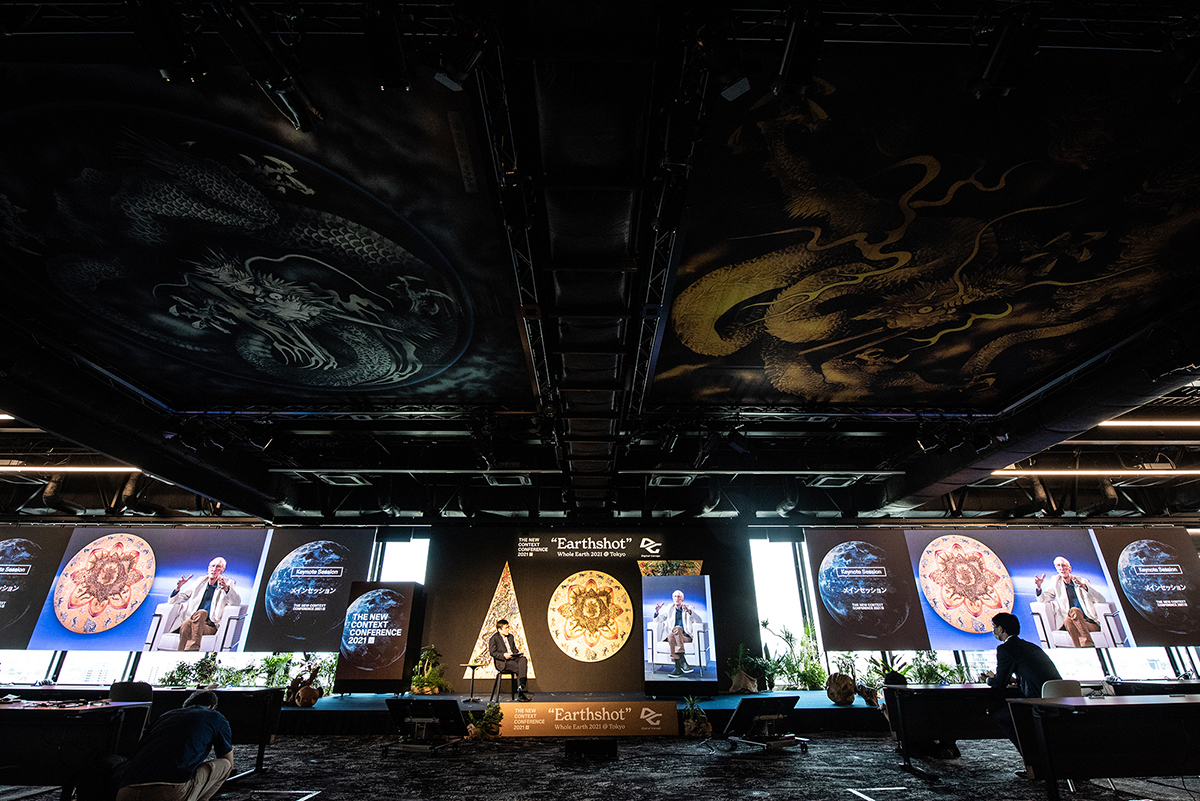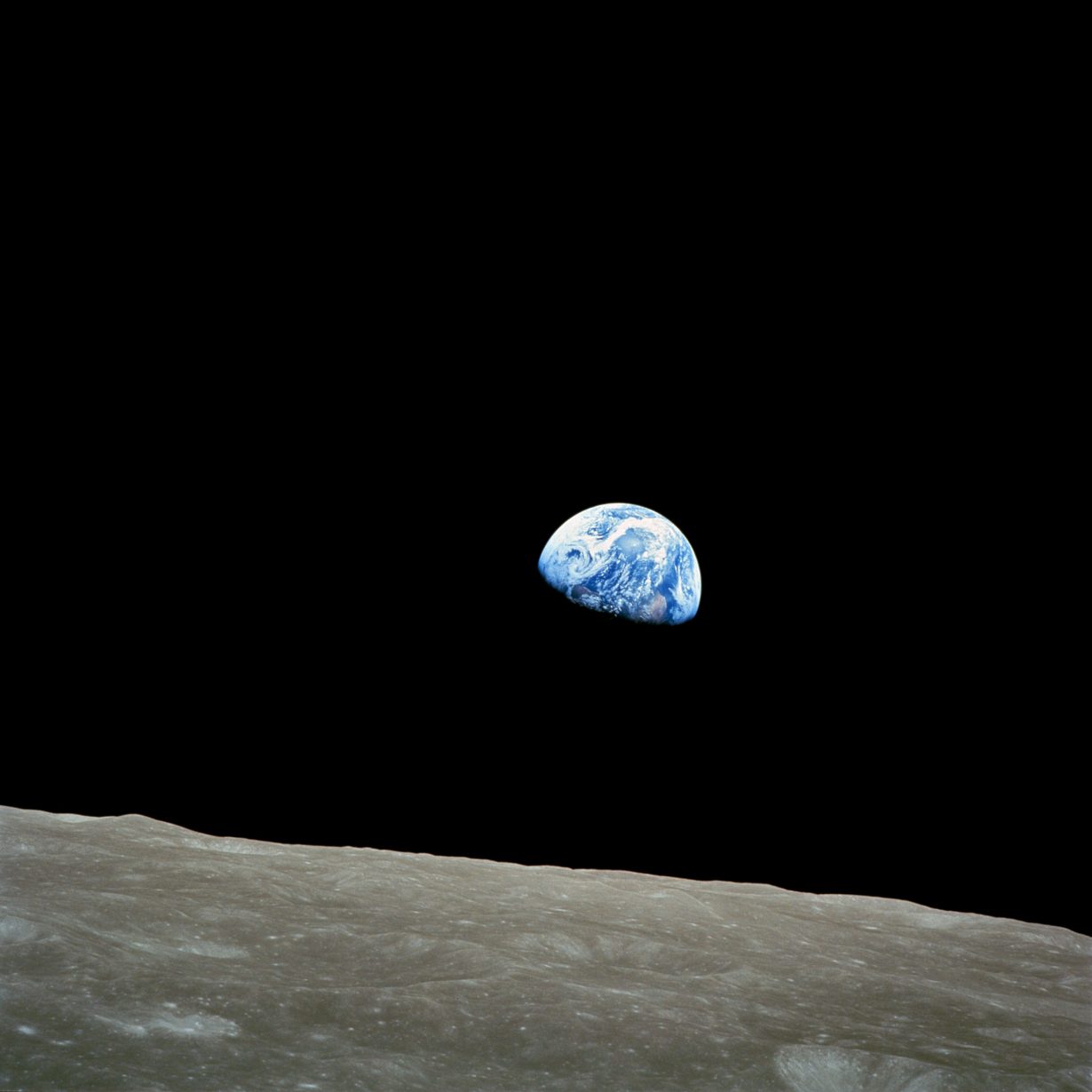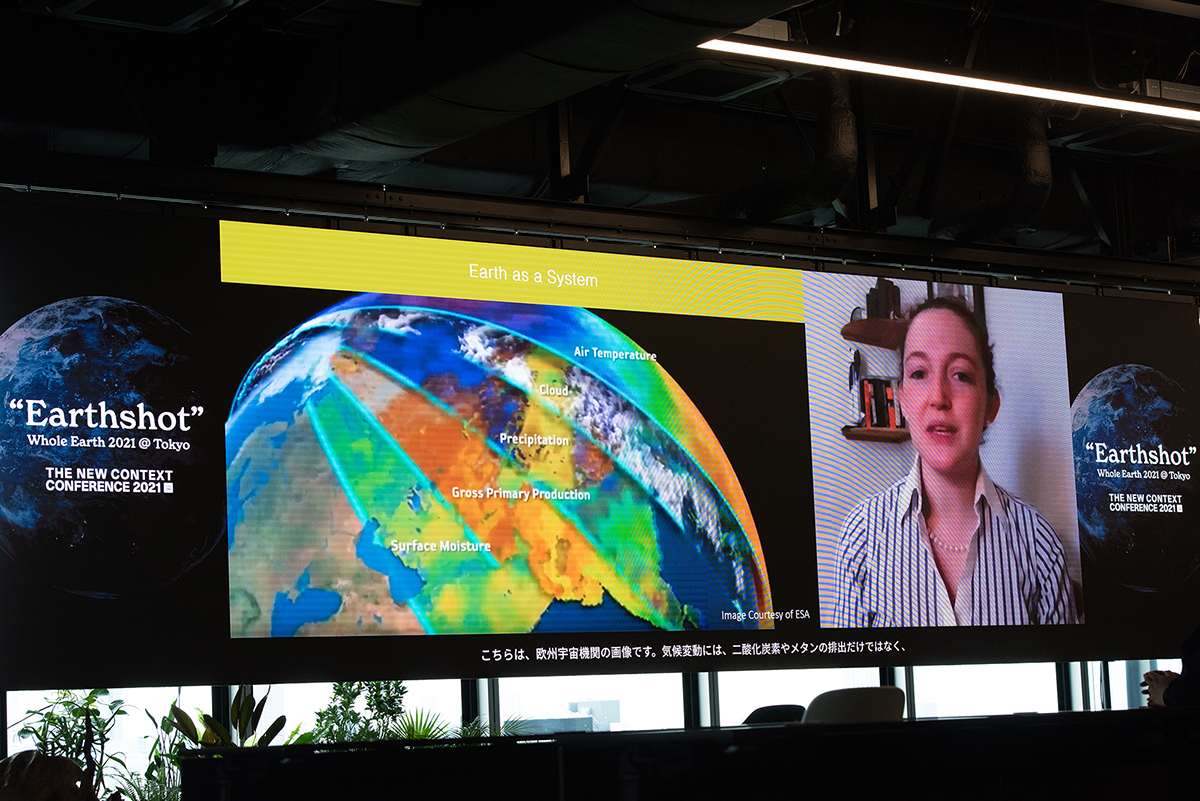A sustainable future conference in Tokyo plays with new ideas, but fails to contend with old habits

Picture the scene: it’s the early morning in Tokyo; Stewart Brand, the voice of late-1960s American counterculture, sits awkwardly, struggling to hear questions through an earpiece as his image is broadcast from San Francisco, where it’s late afternoon. His keynote address opens ‘Earthshot’, and sets out the conference’s first challenge: whether the limitations of technology will lead to the speaker losing his cool.
‘Earthshot’ Whole Earth 2021 @Tokyo (to give the conference its full title), held on 11 August, was the latest edition of the annual New Context Conference series, which explores the state of technology in relation to a sustainable future. The first conference, in 2005, had as its focus ‘The Next Decade of Online Communities & Commerce’, while in more recent years the series has shifted emphasis to topics such as ‘Augmented Humans & Sustainable Technology’ (2017) and ‘How to Build a Data Ecosystem’ (2019). This year the conference takes place at Tokyo’s Digital Garage, a leading IT company in Japan, and via digital connections to spaces such as Brand’s home. It’s also Digital Garage’s 25th anniversary and a little over half a century since Brand first published the Whole Earth Catalog magazine (whose regular run spanned 1968–72). Although at first glance both projects are a far cry from the Space Race and early lunar ambitions of NASA, to which the title of this conference also makes reference.

The Apollo moonshot in 1968 gave the world its first complete view of the planet, in the form of a photograph taken by Bill Anders aboard Apollo 8 as he orbited the Moon on Christmas Eve. He christened the shot Earthrise. Brand seized upon the chance to make it the cover of Whole Earth Catalog’s first issue. It’s an image with which we’re still dealing today.
Indeed images, and how we use and read them, played a surprising role in what is ostensibly a technology conference. Three mandala paintings by Miwa Komatsu were on stage for the entire event – albeit veiled until midway through the conference. The central, circular Next Mandala (2021) was painted earlier this year at Sanboin, a monastery in Koyasan, near Osaka, considered the spiritual home of Japanese Buddhism. Grounded by gold leaf, it pulls together all sorts of local iconography, from the landscape of eight mountain peaks to local wildlife: the repeated image of a black-and-white dog describes how canines led the monastery’s founder, Kobo Daishi (Kukai), through the Koyasan mountains before he settled there in 819CE. Two other more recent triangular artworks titled Dragon’s Gate (2021) sit either side as markers for the Occident and the Orient. Komatsu comes onstage, at first to pray and then dot each canvas with a daub of paint, ceremoniously completing each piece.

She goes on to describe how all three represent the consequence of her meditative process, focusing on a single point to open a Buddhist third eye, or ‘mini-theatre’, filling and animating each canvas. At one point she clears her throat to say that the paintings are a reading rather than a performance, a channelling of a vibe. But their theatrical introduction somewhat undermines that claim.
With morning sessions devoted to the Whole Earth Catalog, ‘Art & Culture’ and ‘Aims of Digital Society & Open Government’, and afternoon sessions focusing on ‘Climate Change & Intended Consequences’, followed by ‘Impact Investment & the Realization of the Sustainable Society’, these artworks seem more of a palate cleanser than integral to any debates. Yet they offer a cycle of death and rebirth that serves as a reminder of how postwar growth has continually threatened the environment. And they remind us of the space of the individual rather than, say, the industry of space, or digital futures. It resonates when Brand says that he considers the Whole Earth Catalog to be “confirming the agency” of everyone, giving each and every person the tools they need to tackle a moment of crisis.

“Don’t send robots [into space],” he urges, “send embodied curiosity.” Give civilisation a way of looking back at itself, to reflect upon its mistakes, he suggests. If the Space Race was won by scientists, in Brand’s vision new challenges like COVID-19 will likely be solved by everyone else. Some of these other people were present. The writer Mitsuhiro Takemura (author of The Future of Memory: Cultural Economy of Digital Archives, 2003; Goodbye Internet, 2018; and Privacy Paradox, 2020) along with Jane Metcalfe (of Neo.Life, and cofounder of WIRED) and artist Nick Philip tried their best to advocate for a resurgent cyberculture, replacing the old currencies of publishing with blockchains, bitcoins and nonfungible tokens. Yet there was no mention of who or what would ultimately manage these cryptocurrencies or their environmental impact. Audrey Tang, digital minister of Taiwan, put forth a ‘Fast, Fair, Fun’ strategy for social engagement encouraging cooperation. Tang even spoke of how language was as powerful as any tool if used with people in mind. ‘Programmer’ in Mandarin can also be read as ‘a designer of systems’, which in turn, she stated, chimes with Buckminster Fuller’s claims that change happens not by ‘fighting the existing reality’ but by creating ‘a new model that makes the existing model obsolete’.

Private industry presented one solution. The public sector presented another. Climate systems and demographics are easily bogged down by pure data. Creativity finds a way to ease regulation and bureaucracy. It’s what Kate McCall-Kiley of the US technology lab XD likened to orbiting a “giant hairball”. Taro Kono, the minister for administrative reform, and Takuya Hirai, the minister for digital transformation, outlined the Japanese government’s new Digital Agency. But their greatest challenge seemed more fundamental: plans earlier this year to replace every governmental fax machine with email were put on hold due to fears about the security implications of such a change. For all the good intentions, old habits die hard.
From the October 2021 issue of ArtReview